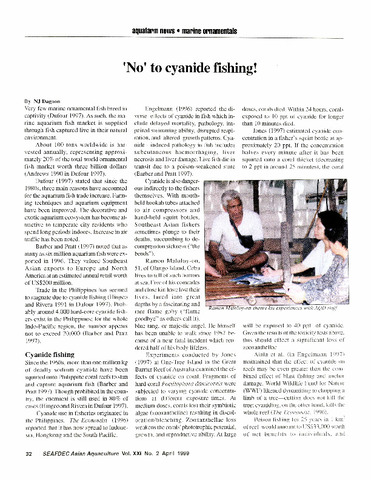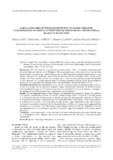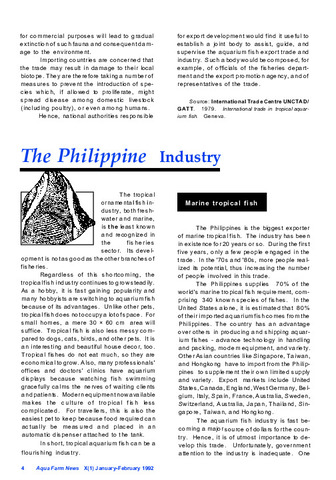Susceptibility of hatchery-reared snubnose pompano Trachinotus blochii to natural betanodavirus infection and their immune responses to the inactivated causative virus
- Global styles
- MLA
- Vancouver
- Elsevier - Harvard
- APA
- Help

View/
Date
2011Author
Page views
4,549ASFA keyword
AGROVOC keyword
Metadata
Show full item record
Share
Abstract
Mass mortality of snubnose pompano Trachinotus blochii fry exhibiting dark coloration, anorexia, and abnormal swimming behavior was recently documented at the hatchery of the Aquaculture Department of the Southeast Asian Fisheries Development Center, Philippines. Samples of brain tissues were collected from affected fish and processed for RT-PCR amplification and virus isolation in cell culture. Infected E-11 cells exhibited cytopathic effect characteristic of betanodavirus. Histopathology of moribund fish showed pronounced vacuolations in the brain, spinal cord, and retina. An RT-PCR product of approximately 430 bp was amplified from the culture supernatant of betanodavirus-infected E-11 cells and sequenced. Sequencing of the T4 region of the coat protein gene (RNA 2) revealed clustering of the isolated virus within the red-spotted grouper nervous necrosis virus type. The pathogenicity of the isolated betanodavirus in healthy pompano juveniles and fry was determined via intramuscular injection and immersion challenges, respectively. Higher mortality rates were obtained in challenged fish compared with the controls. An inactivated vaccine was subsequently prepared by treating the clarified betanodavirus with formalin. Pompano juveniles intraperitoneally injected with the inactivated vaccine exhibited neutralizing antibodies from days 15 (mean titer 1:240) to 125 (1:560) with the highest titer noted at day 64 (1:2240) post-vaccination. Additionally, pompano fry bath-vaccinated and consequently bath-challenged with betanodavirus at day 35 post-vaccination showed higher survival rate compared with the control, indicating the potential of the inactivated betanodavirus vaccine against VNN in pompano fry and juveniles.
Keywords
BetanodavirusSuggested Citation
Pakingking, R. V., Jr., Mori, K.-I., Bautista, N. B., de Jesus-Ayson, E. G., & Reyes, O. (2011). Susceptibility of hatchery-reared snubnose pompano Trachinotus blochii to natural betanodavirus infection and their immune responses to the inactivated causative virus. Aquaculture , 311(1-4), 80-86. https://doi.org/10.1016/j.aquaculture.2010.11.035
Type
ArticleISSN
0044-8486Collections
- Journal Articles [1258]
Related items
Showing items related by title, author, creator and subject.
-
'No' to cyanide fishing!
Dagoon, N. J. (Aquaculture Department, Southeast Asian Fisheries Development Center, 1999) -
Larval and early juvenile development of silver therapon, Leiopotherapon plumbeus (Actinopterygii: Perciformes: Terapontidae), reared in mesocosms
Aya, Frolan ; Corpuz, Mark Nell C.; Laron, Manuel A.; Garcia, Luis Maria
; Corpuz, Mark Nell C.; Laron, Manuel A.; Garcia, Luis Maria  (Szczecińskie Towarzystwo Naukowe, 2017)
The silver therapon, Leiopotherapon plumbeus (Kner, 1864), is an endemic and economically important freshwater food fish in the Philippines. The natural populations of this species have been declining during the past years, ...
(Szczecińskie Towarzystwo Naukowe, 2017)
The silver therapon, Leiopotherapon plumbeus (Kner, 1864), is an endemic and economically important freshwater food fish in the Philippines. The natural populations of this species have been declining during the past years, ... -
The Philippine industry: Marine tropical fish
Castaños, Milagros T.; Southeast Asian Fisheries Development Center, Aquaculture Department (Aquaculture Department, Southeast Asian Fisheries Development Center, 1992)




